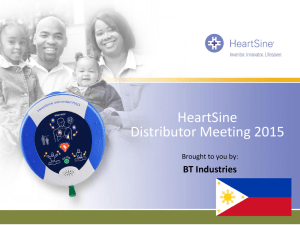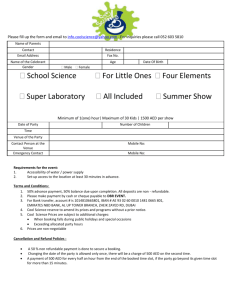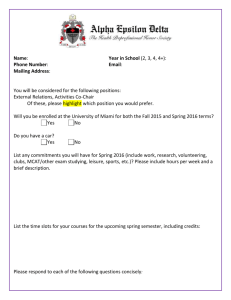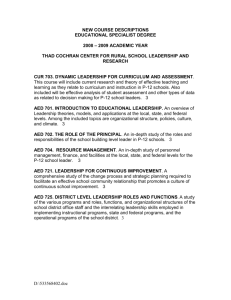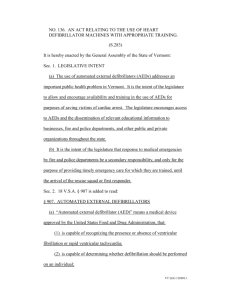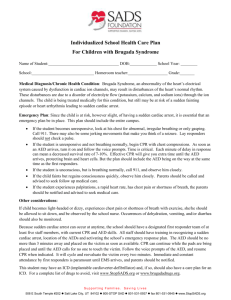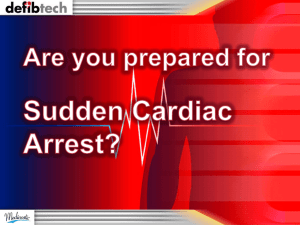Questions and Answers About AEDs and Defibrillation
advertisement
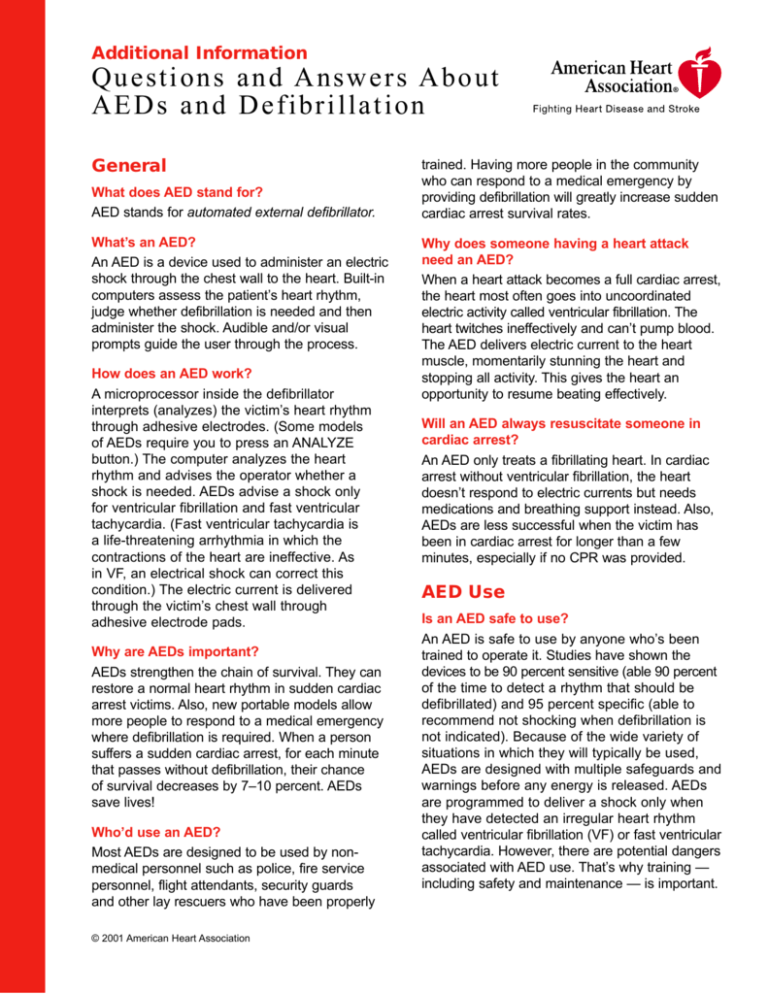
Additional Information Questions and Answers About AEDs and Defibrillation General What does AED stand for? AED stands for automated external defibrillator. What’s an AED? An AED is a device used to administer an electric shock through the chest wall to the heart. Built-in computers assess the patient’s heart rhythm, judge whether defibrillation is needed and then administer the shock. Audible and/or visual prompts guide the user through the process. How does an AED work? A microprocessor inside the defibrillator interprets (analyzes) the victim’s heart rhythm through adhesive electrodes. (Some models of AEDs require you to press an ANALYZE button.) The computer analyzes the heart rhythm and advises the operator whether a shock is needed. AEDs advise a shock only for ventricular fibrillation and fast ventricular tachycardia. (Fast ventricular tachycardia is a life-threatening arrhythmia in which the contractions of the heart are ineffective. As in VF, an electrical shock can correct this condition.) The electric current is delivered through the victim’s chest wall through adhesive electrode pads. Why are AEDs important? AEDs strengthen the chain of survival. They can restore a normal heart rhythm in sudden cardiac arrest victims. Also, new portable models allow more people to respond to a medical emergency where defibrillation is required. When a person suffers a sudden cardiac arrest, for each minute that passes without defibrillation, their chance of survival decreases by 7–10 percent. AEDs save lives! Who’d use an AED? Most AEDs are designed to be used by nonmedical personnel such as police, fire service personnel, flight attendants, security guards and other lay rescuers who have been properly © 2001 American Heart Association trained. Having more people in the community who can respond to a medical emergency by providing defibrillation will greatly increase sudden cardiac arrest survival rates. Why does someone having a heart attack need an AED? When a heart attack becomes a full cardiac arrest, the heart most often goes into uncoordinated electric activity called ventricular fibrillation. The heart twitches ineffectively and can’t pump blood. The AED delivers electric current to the heart muscle, momentarily stunning the heart and stopping all activity. This gives the heart an opportunity to resume beating effectively. Will an AED always resuscitate someone in cardiac arrest? An AED only treats a fibrillating heart. In cardiac arrest without ventricular fibrillation, the heart doesn’t respond to electric currents but needs medications and breathing support instead. Also, AEDs are less successful when the victim has been in cardiac arrest for longer than a few minutes, especially if no CPR was provided. AED Use Is an AED safe to use? An AED is safe to use by anyone who’s been trained to operate it. Studies have shown the devices to be 90 percent sensitive (able 90 percent of the time to detect a rhythm that should be defibrillated) and 95 percent specific (able to recommend not shocking when defibrillation is not indicated). Because of the wide variety of situations in which they will typically be used, AEDs are designed with multiple safeguards and warnings before any energy is released. AEDs are programmed to deliver a shock only when they have detected an irregular heart rhythm called ventricular fibrillation (VF) or fast ventricular tachycardia. However, there are potential dangers associated with AED use. That’s why training — including safety and maintenance — is important. The AHA recommends that anyone who lives or works where an AED is available for use by lay rescuers participate in a Heartsaver AED course. AEDs are so user-friendly that untrained rescuers can generally succeed in attaching the pads, pressing ANALYZE (if required), and delivering shocks. Untrained rescuers, however, may not know when to use an AED, and they may not use an AED safely, posing some danger of electric shock to themselves and others. Also, untrained rescuers wouldn’t know how to respond to the victim when the AED prompts “no shock indicated.” An operator needs only to follow the illustrations on the electrode pads and the control panel, and listen and follow the voice prompts (for example, “Do not touch the patient.”). An AED will deliver a shock only when a shock is advised and the operator pushes the SHOCK button. This prevents a shock from being delivered accidentally. Can an AED make mistakes? An AED will almost never decide to shock an adult victim when the victim is in non-VF. AEDs “miss” fine VF only about five percent of the time. The internal computer uses complex analysis algorithms to determine whether to shock. If the operator has attached the AED to an adult victim who’s not breathing and pulseless (in cardiac arrest), the AED will make the correct “shock” decision more than 90 times out of 100 and a correct “no shock indicated” decision more than 95 times out of 100. This level of accuracy is greater than the accuracy of emergency professionals who must read and interpret the rhythms. Are AEDs safe to use on children? An AED should not be used on a child younger than eight years old. Will I get zapped if I shock a victim in the rain or near water? It’s remotely possible to get shocked or to shock bystanders if there’s standing water around and under the patient. Try to move the patient to a dry area and cut off wet clothing. Also be sure that the skin has been toweled off so the electrode pads will stick to the skin. At the moment you press the SHOCK button, you must make sure that no one, including yourself (the AED operator), touches any part of the victim. © American Heart Association
